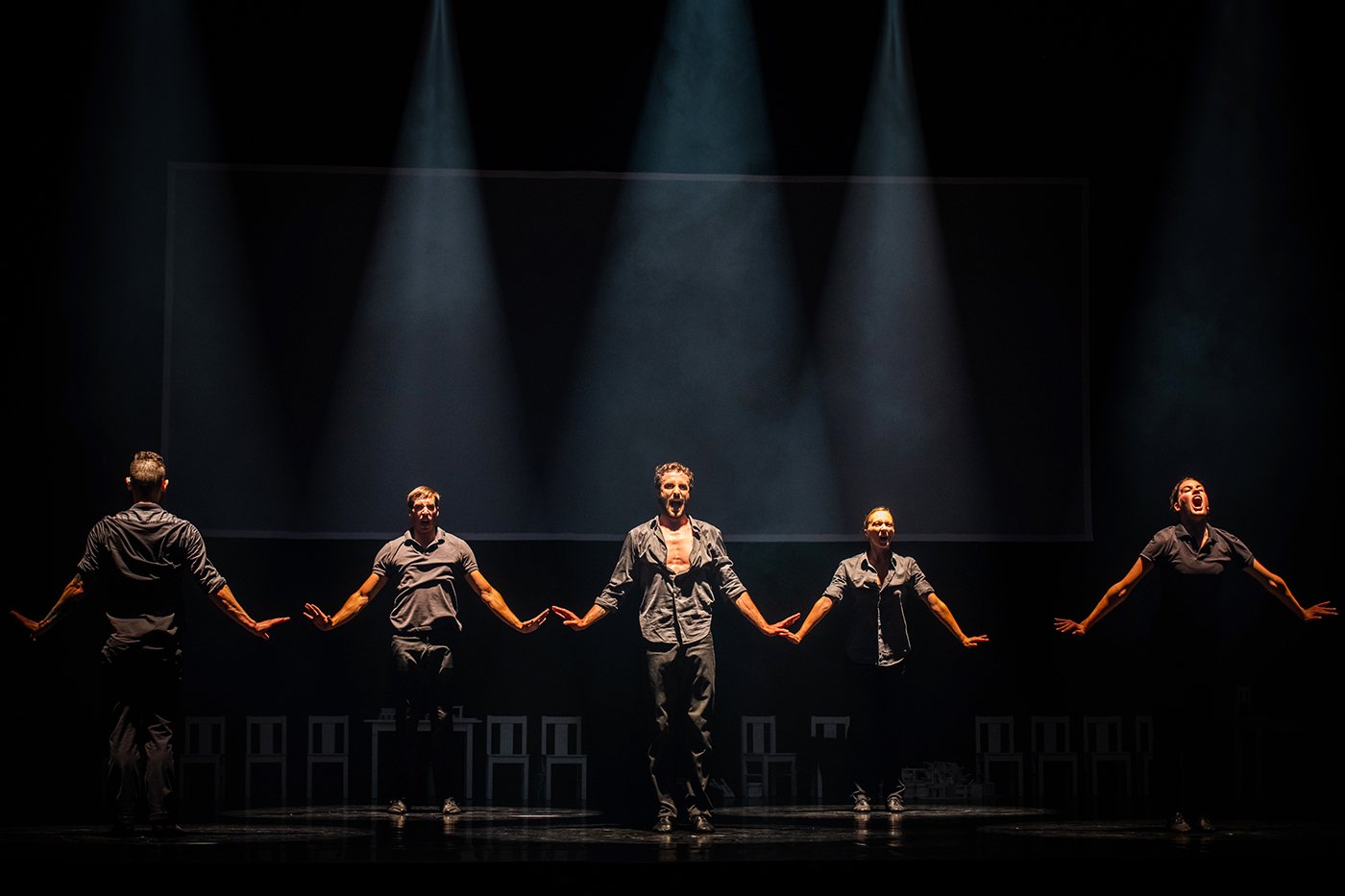How can one express what it is to experience music when one has a hearing impairment? This challenge is the inspiration behind 9, a dance performance choreographed by Hélène Blackburn – Artistic Director of Montreal-based company, Cas Public.
One of the company’s dancers, Cai Glover, is deaf yet has overcome any potential limitations to pursue his ambition of becoming a dancer. Blackburn has used this admirable fact as the springboard for the concept of Cas Public’s multi-disciplinary show. Inspired by Beethoven’s Ninth Symphony, her aim is to explore what it must be like to experience the music if one is – like the composer was himself – deaf or hearing impaired.
Before the performance begins, there is some relaxed play among the adult cast and the group of small boys gathered on stage. Using the many white wooden chairs, they play a game of musical chairs with no music. It seems a pity that, at least in this performance, no female children are featured in a production that aims at inclusivity and understanding.
Dancing starts to a slightly off-key piano opening, with a significant solo spotlight serving as a strong reminder of the show’s message about isolation. Dressed in corporate suits and open-necked shirts, all five dancers – Glover, Nicholas Bellefleur-Bondu, Daphnée Laurendeau, Carson McDougall and Danny Morissette – begin the intense muscular extravaganza. Although the piece is wordless, it is certainly not silent, and is fact so fierce and powerful are the movements that they could well be dramatic signing (though only a signer would be able to confirm this).
Running alongside the dance is a film by Kenneth Michiels, with some the scenes’ movements impressively mirrored by the dancers. The film also contains parts that spell out the message of what it means to be deaf using a little boy with a hearing aid. This element of the production could easily stand alone as an art installation: in this environment, however, it actually detracts from the events on stage that are powerful enough to speak for themselves. The meaning of the many white chairs, while beautiful in their own right, is rather lost as is the curious appearances of a small remote controlled car.
Blackburn’s remarkable choreography, which includes a stunning blindfolded duet, is like a physical synaesthesia as it chimes so perfectly with the complexity of Beethoven’s music. Glover’s removal of his hearing aids at the end of the performance is statement enough. The rest is gilding the lily.
